
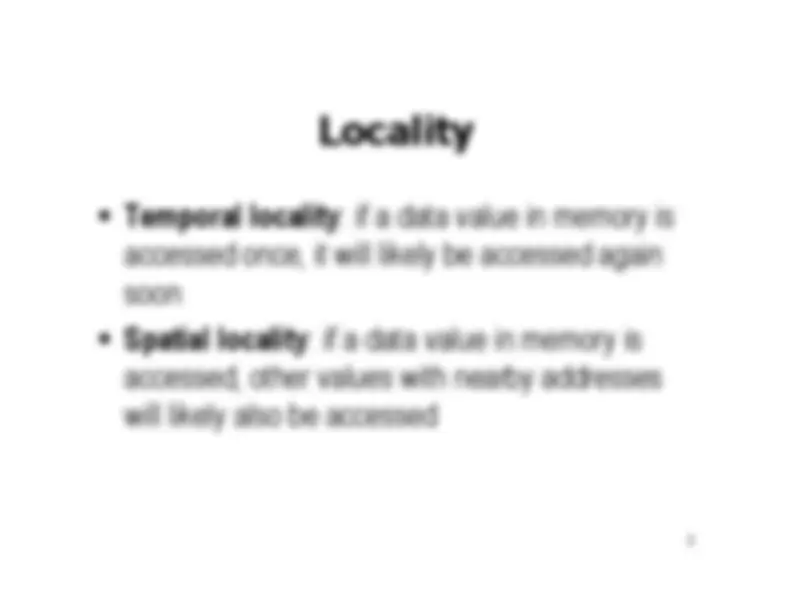
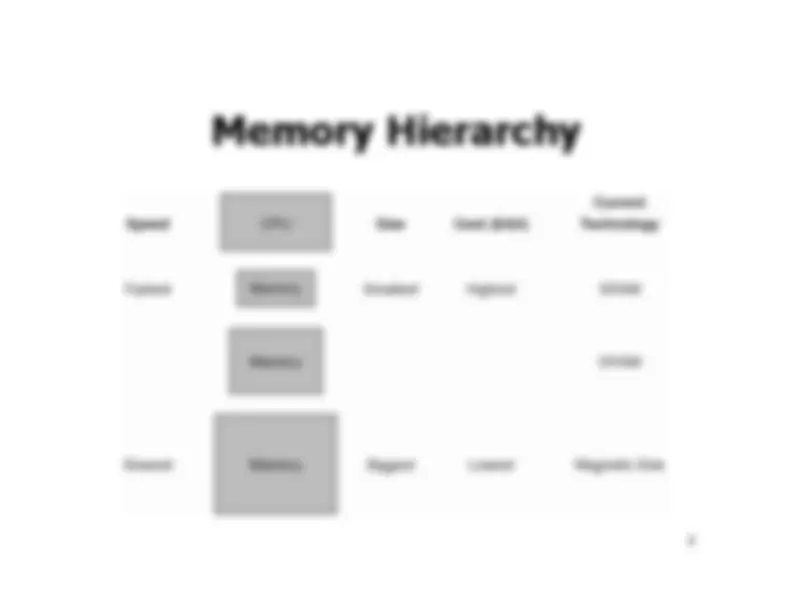
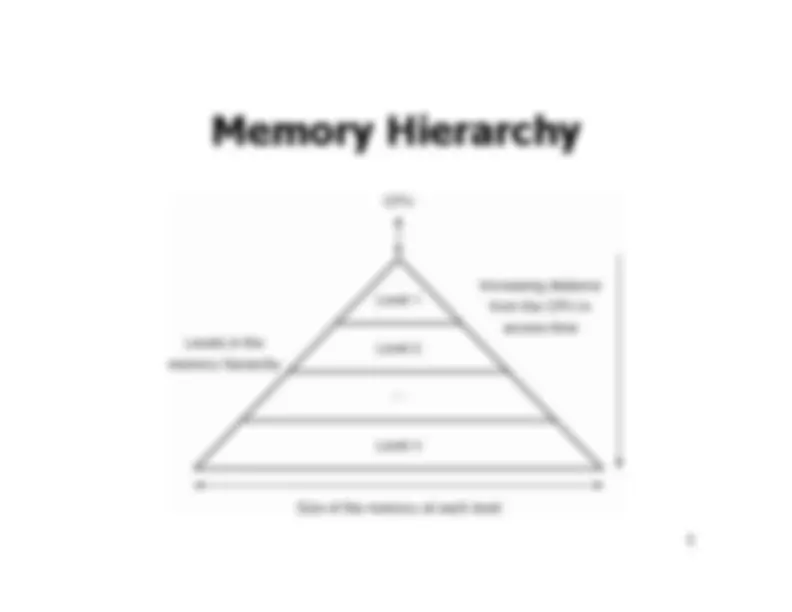
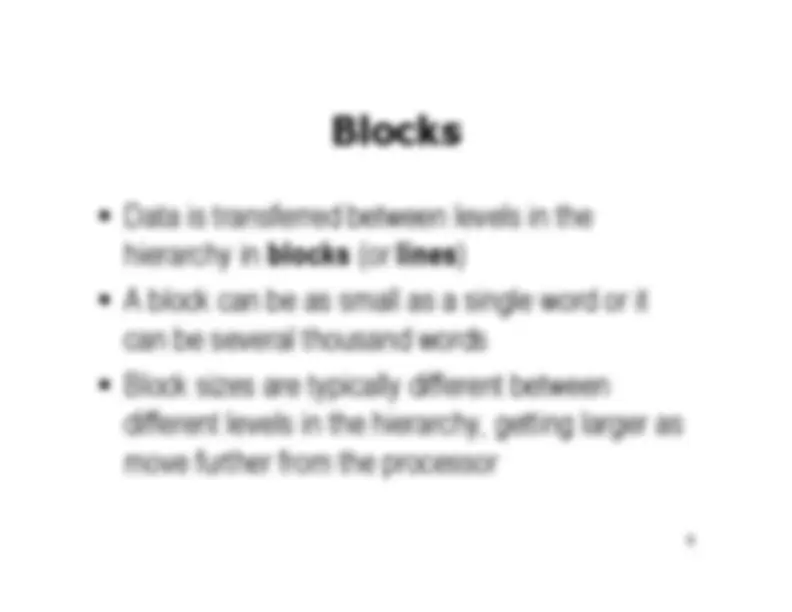
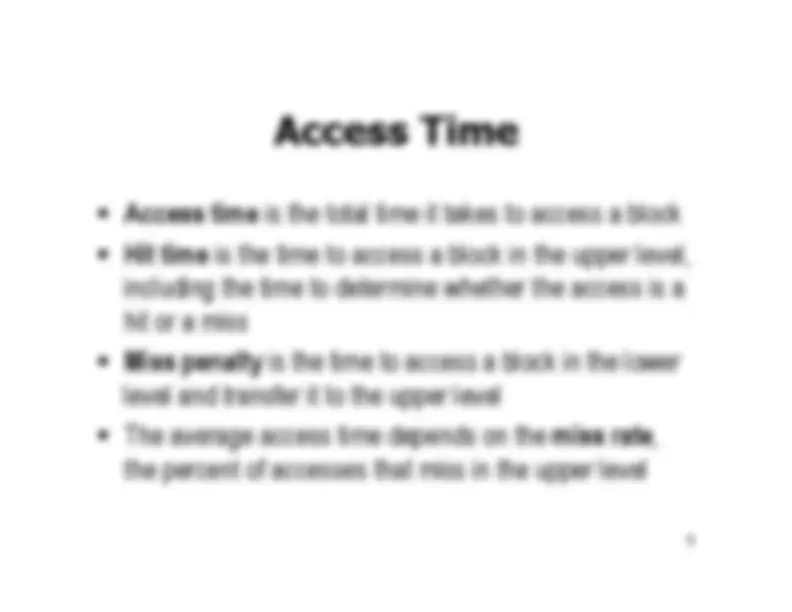
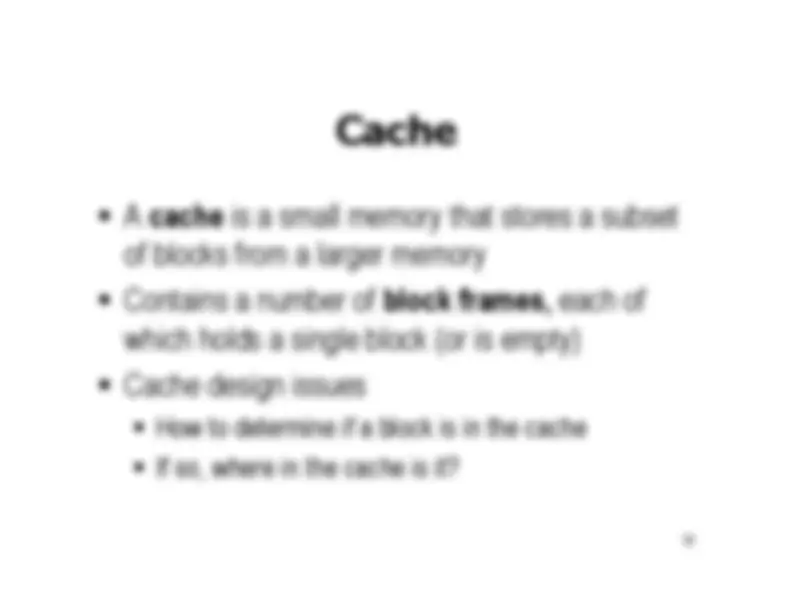
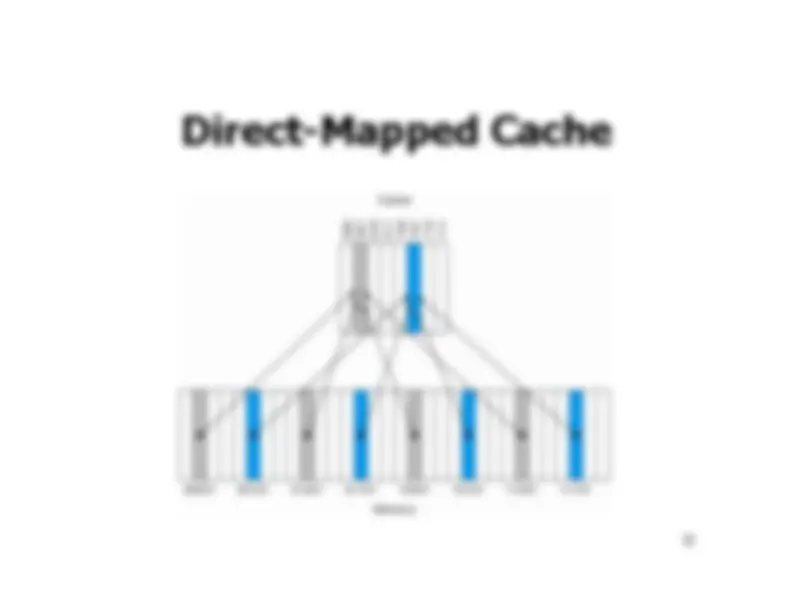
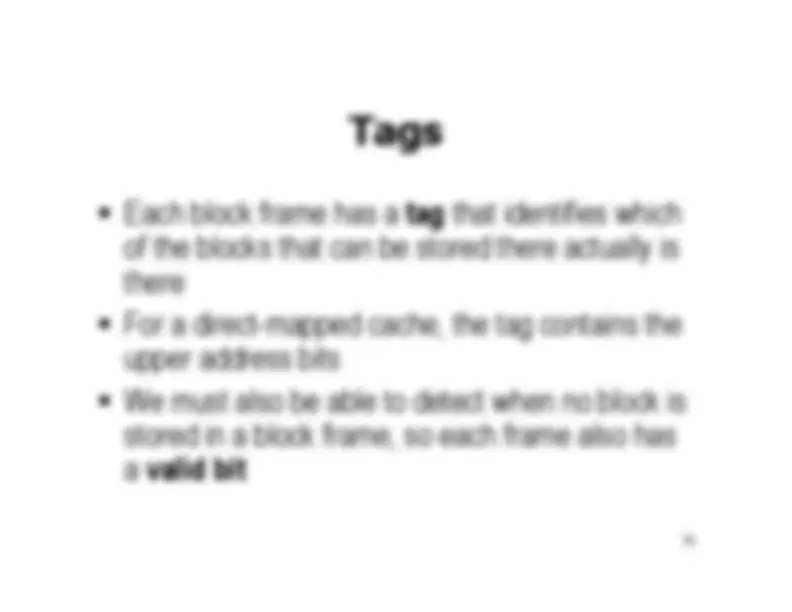
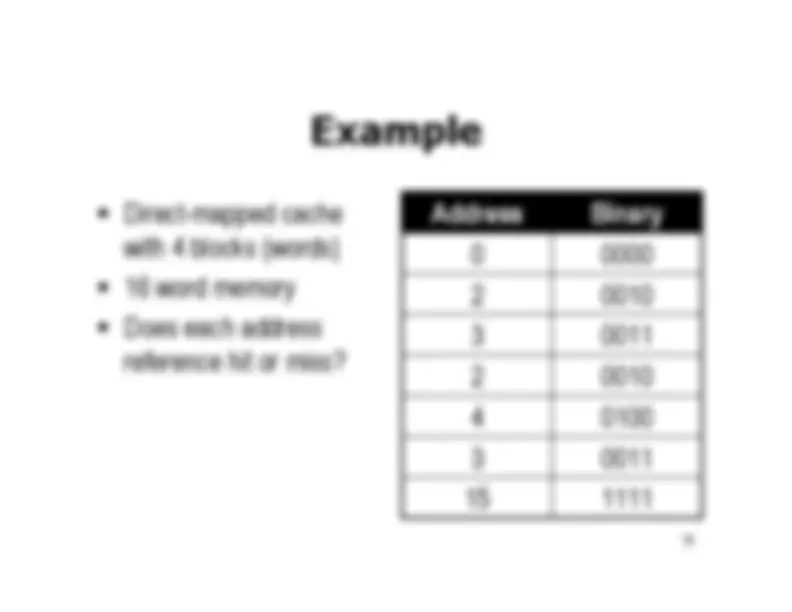
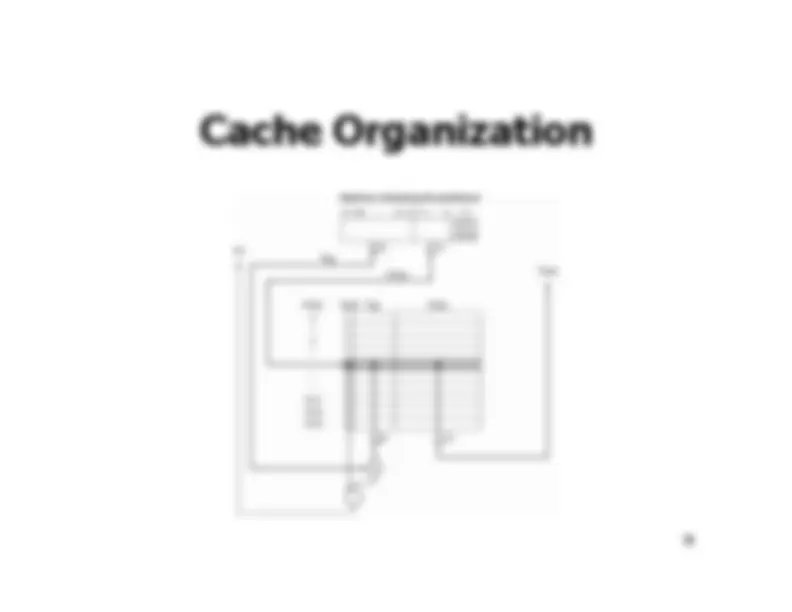
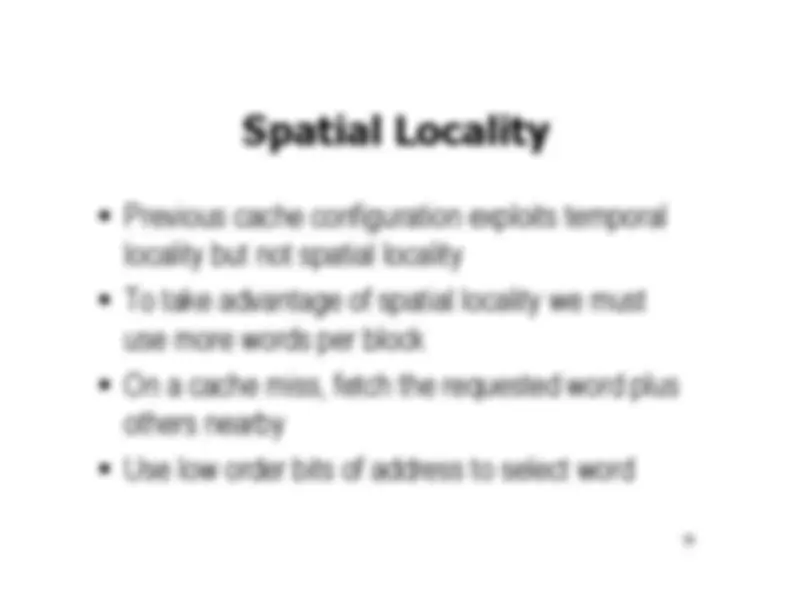
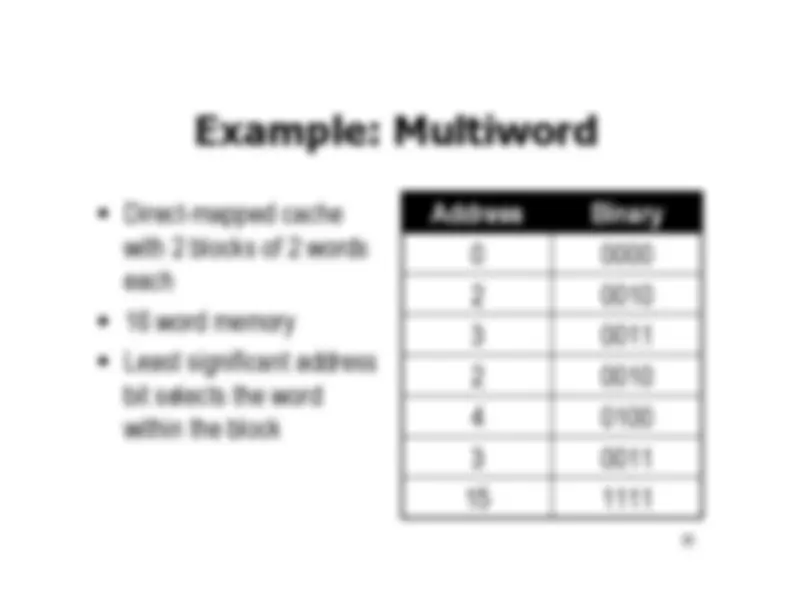
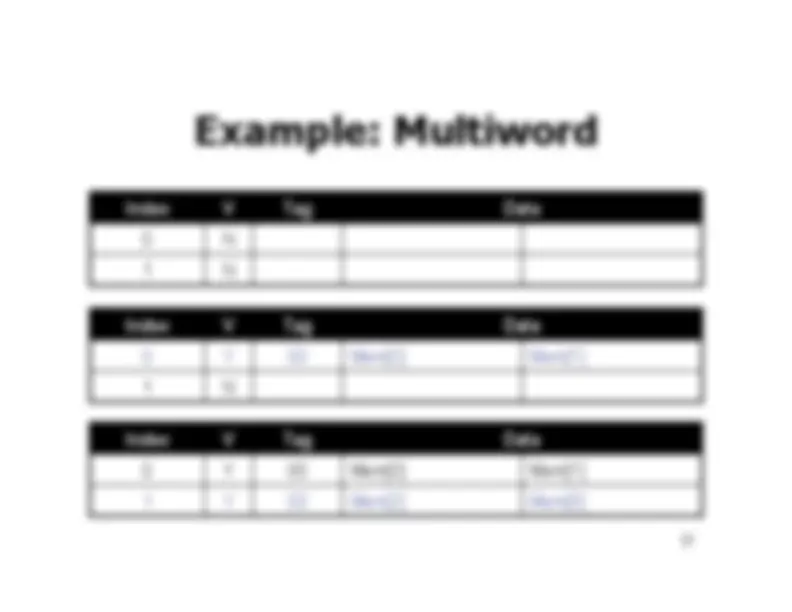
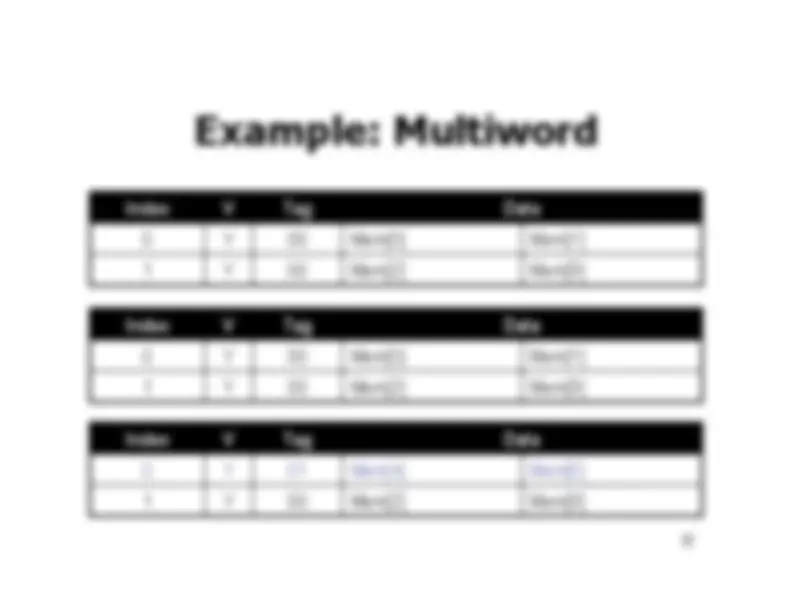
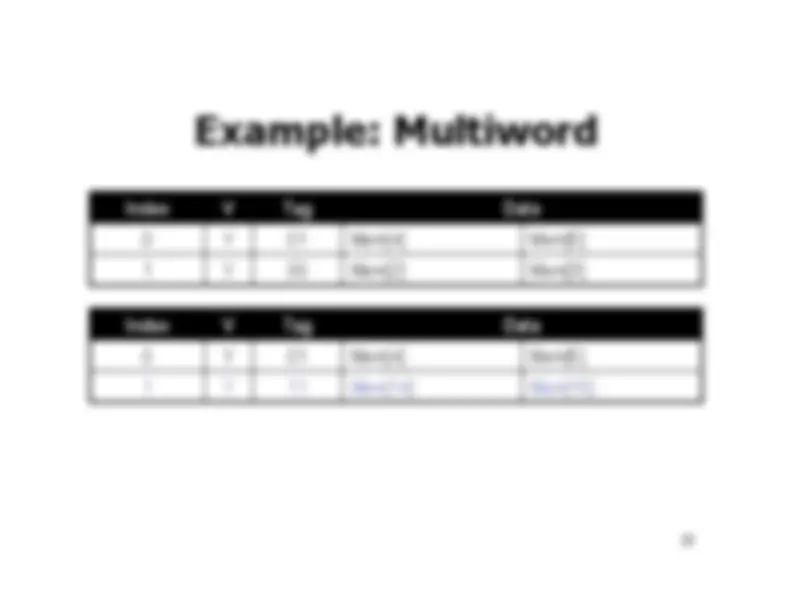
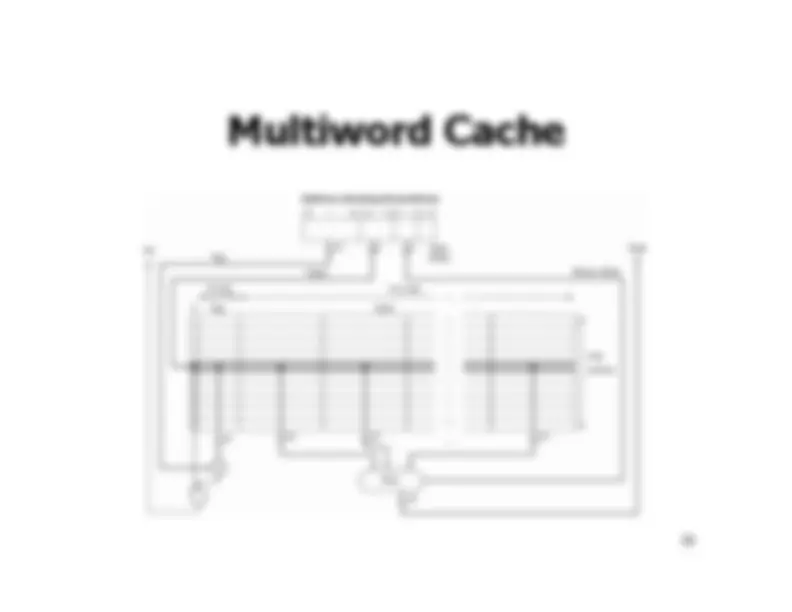
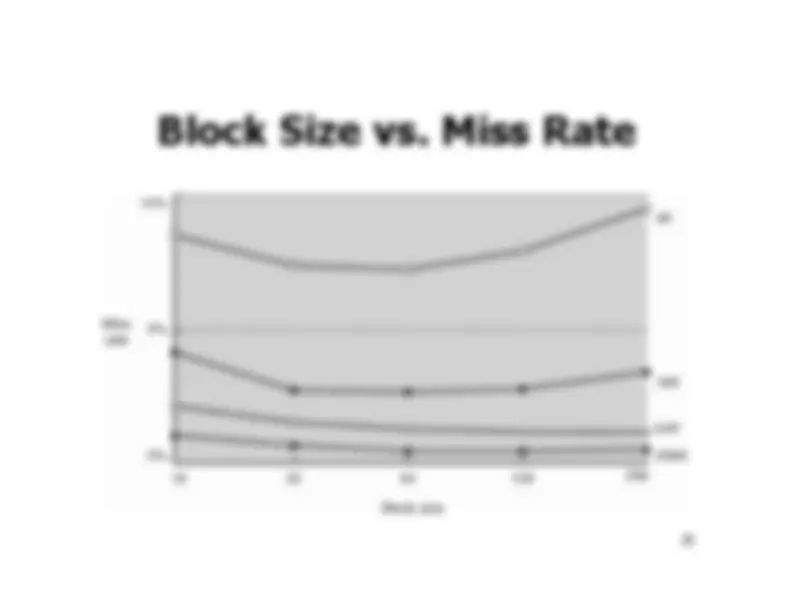
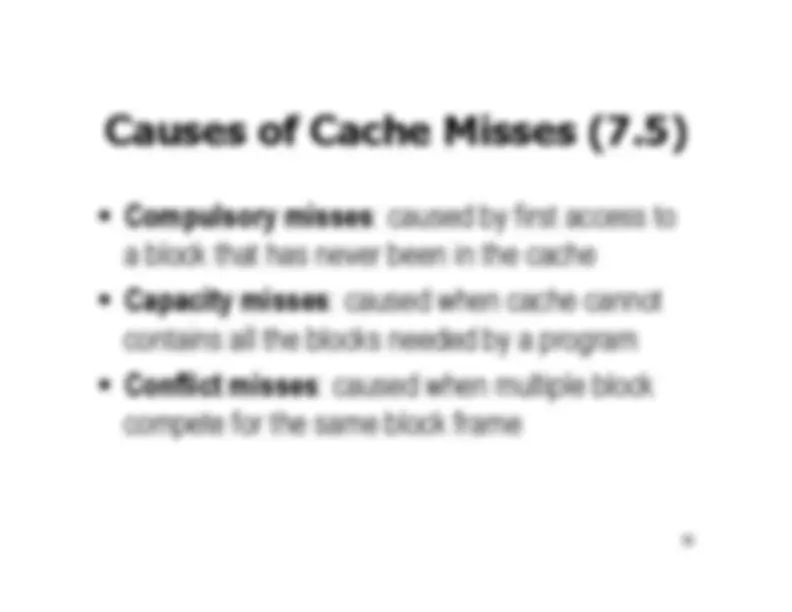
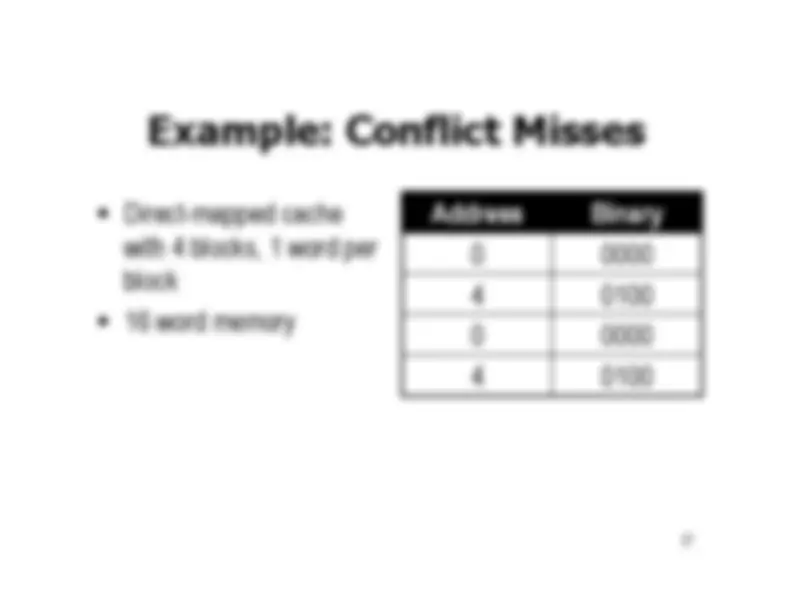
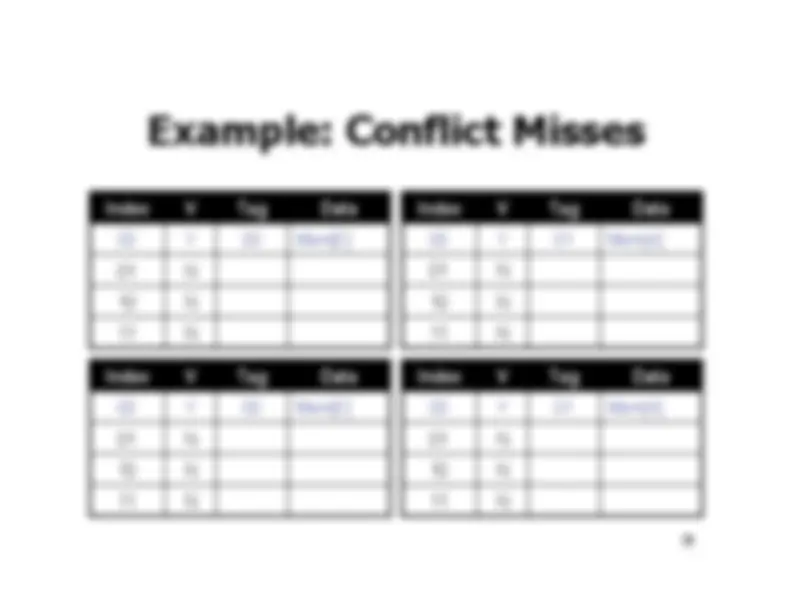
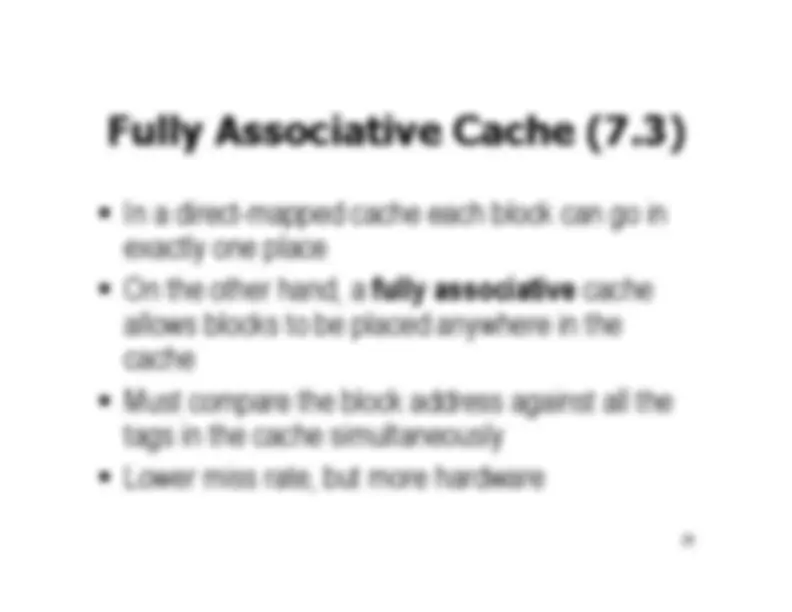
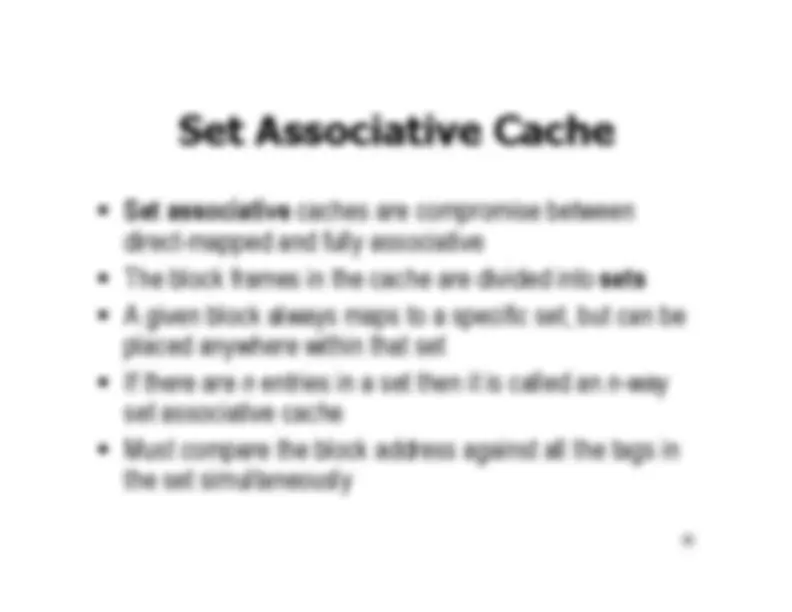
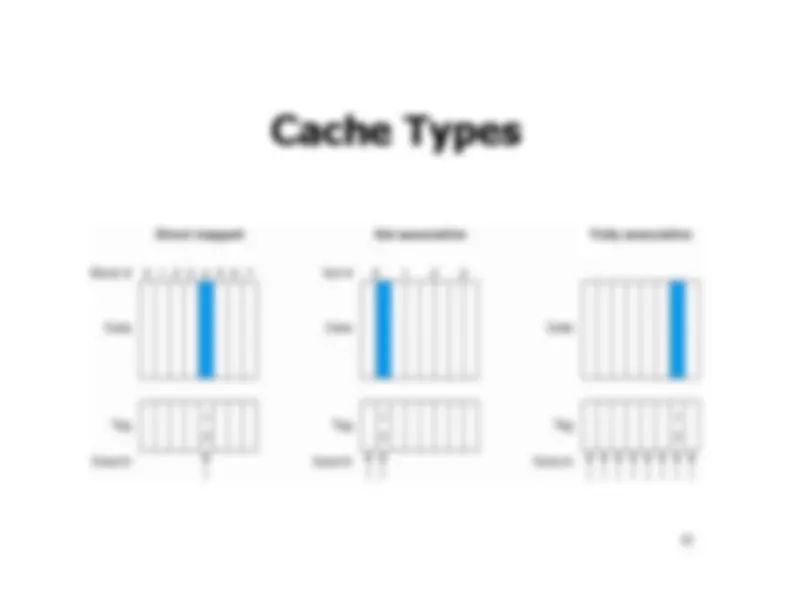
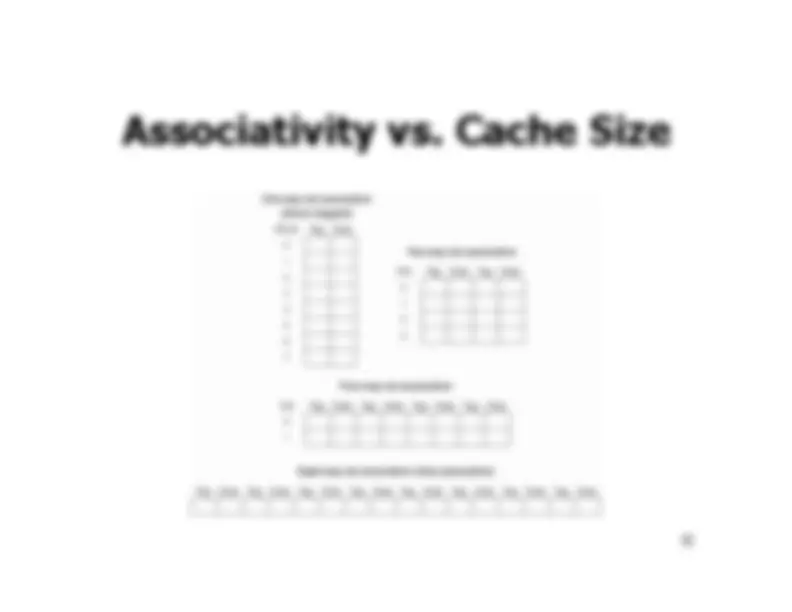
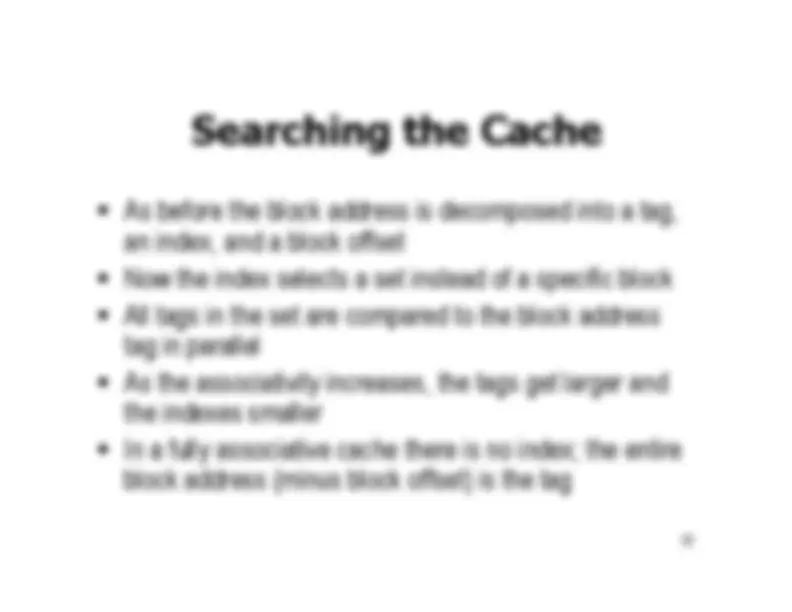
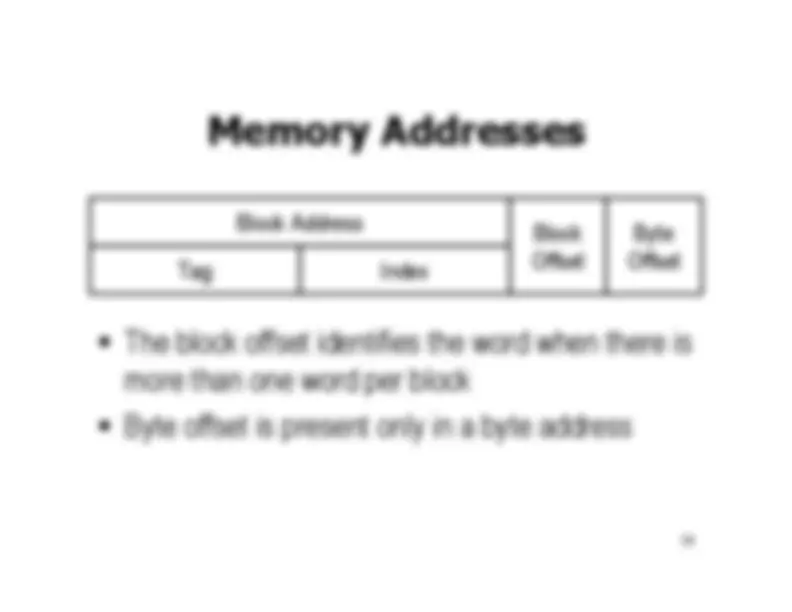
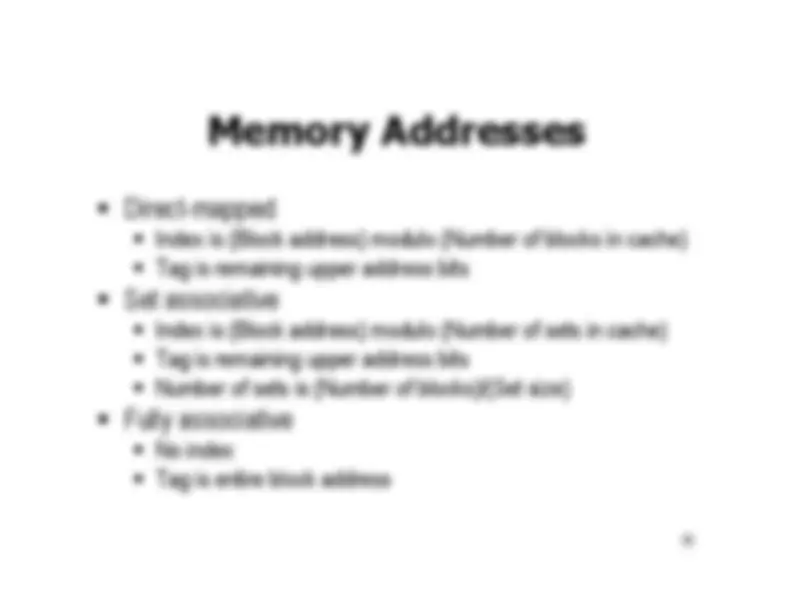
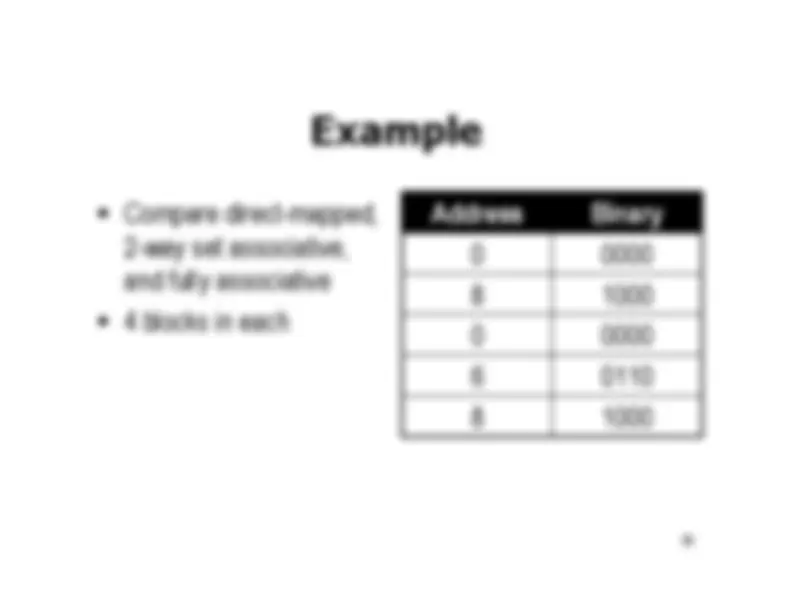
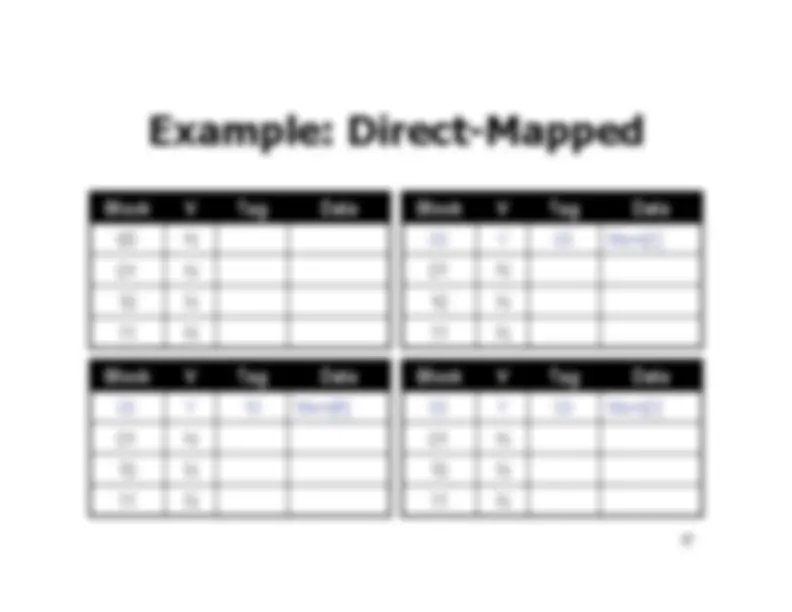
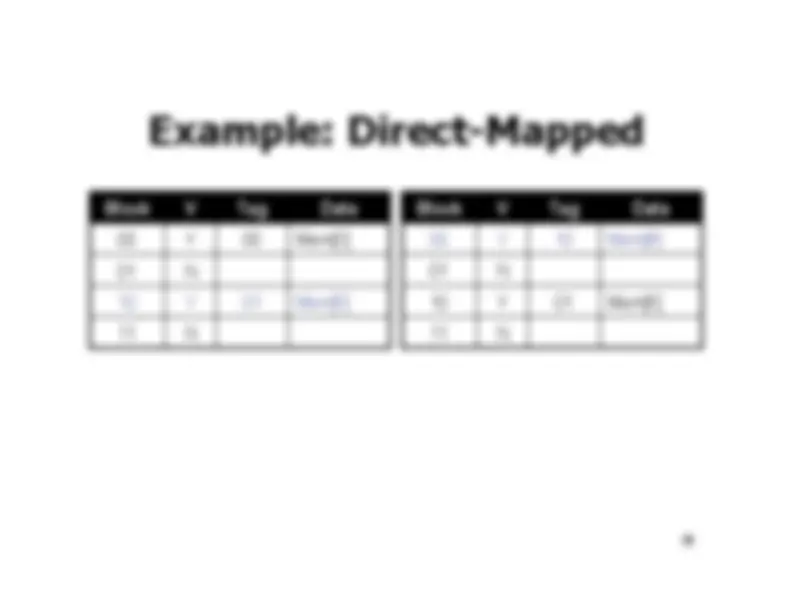
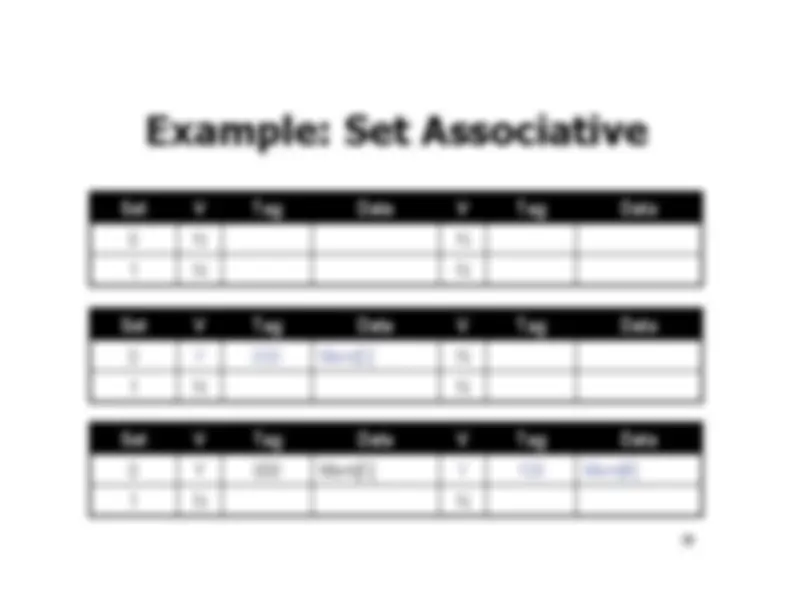
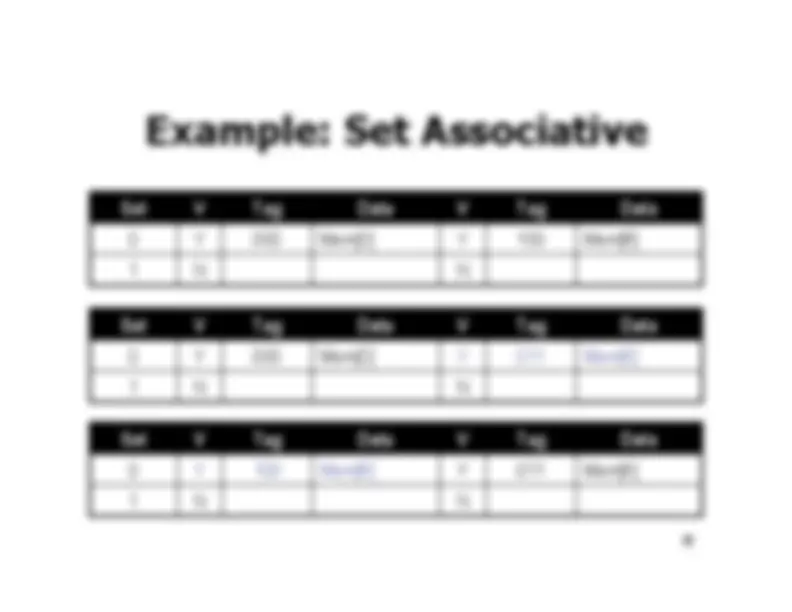
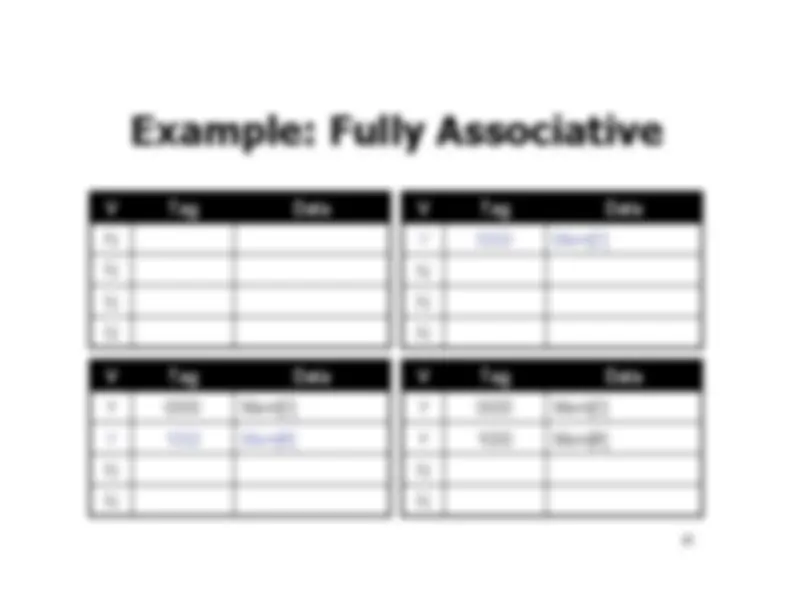
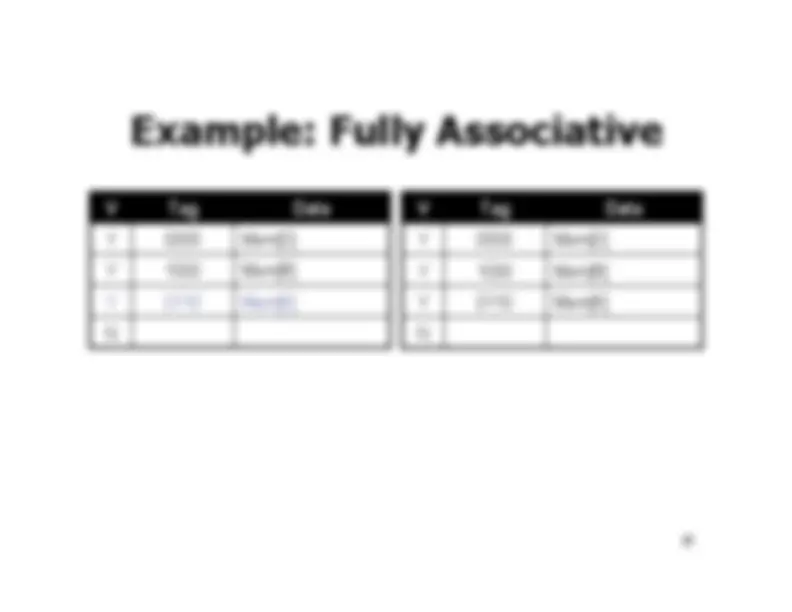
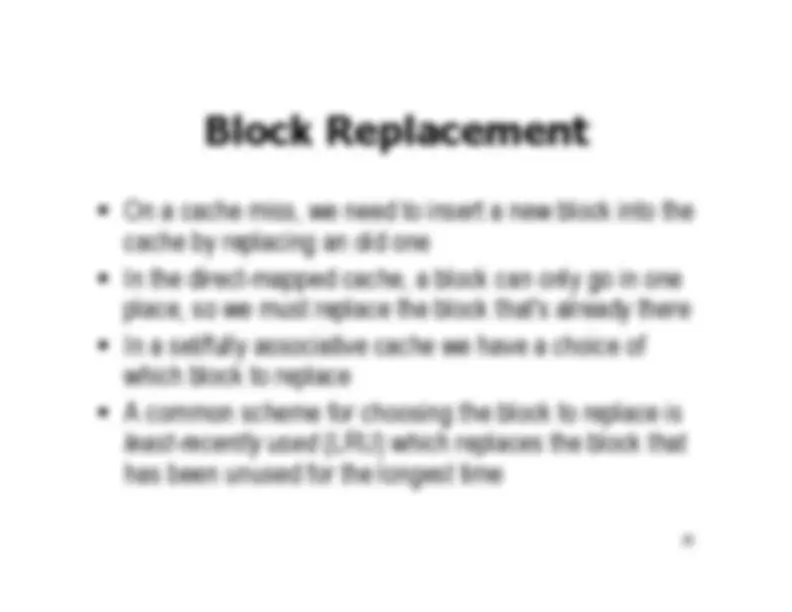
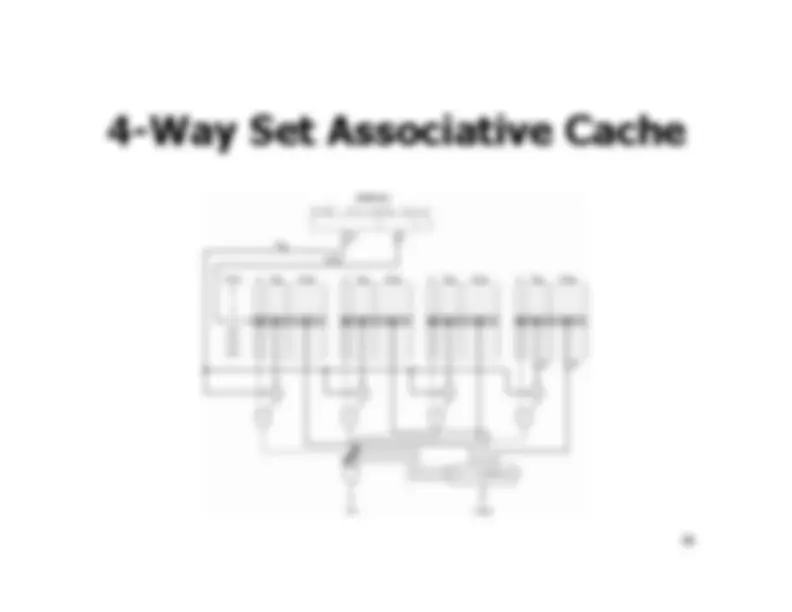
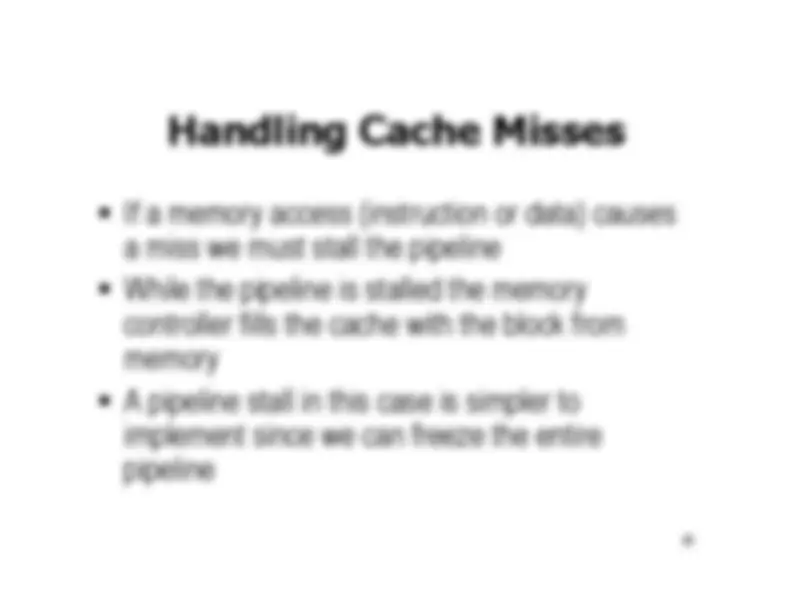
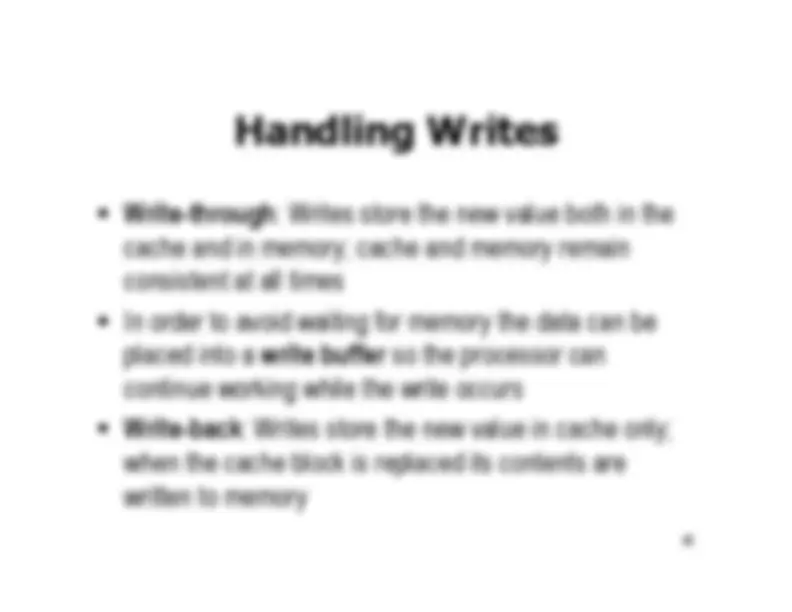
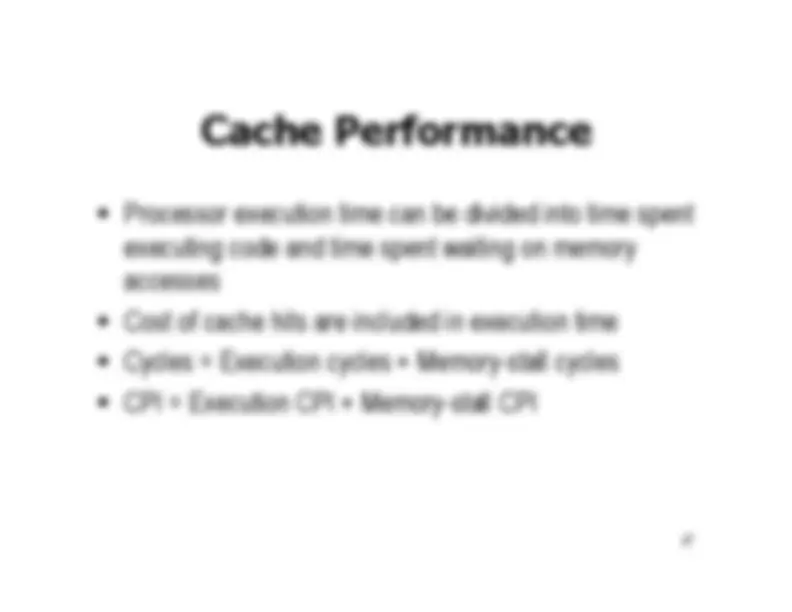
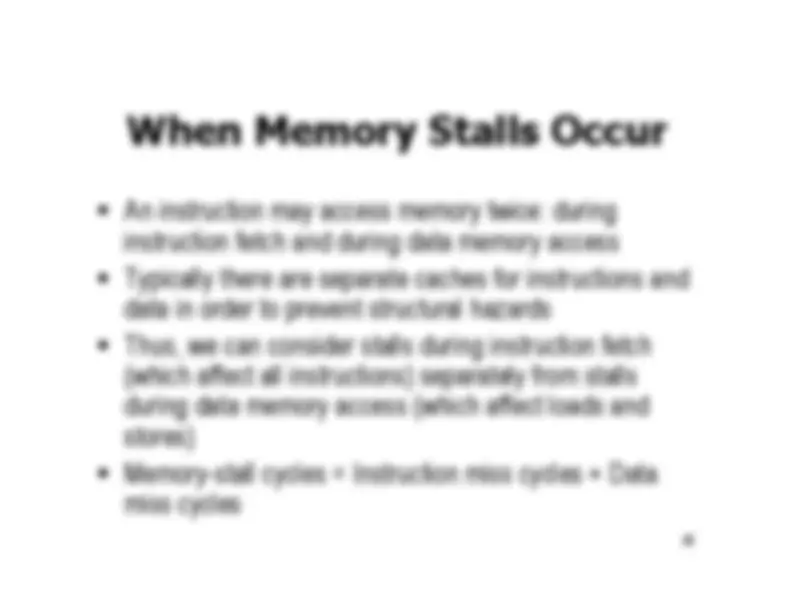
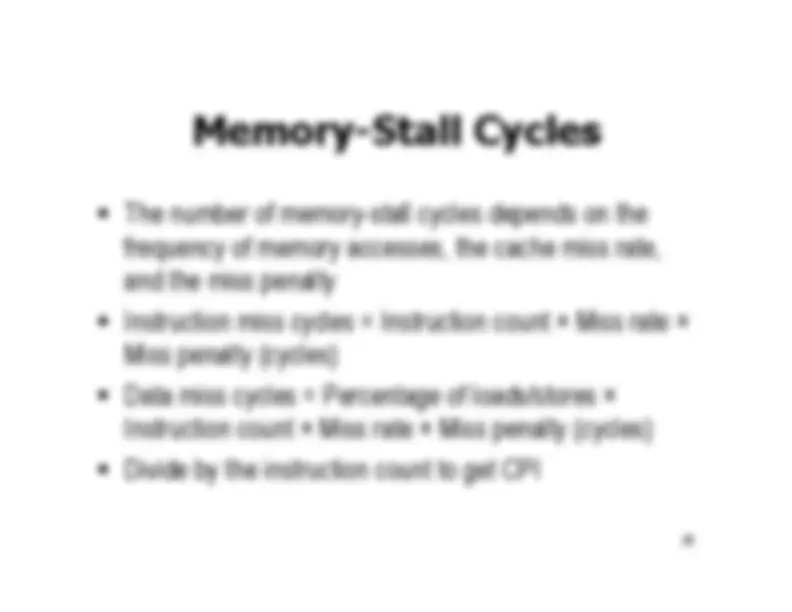
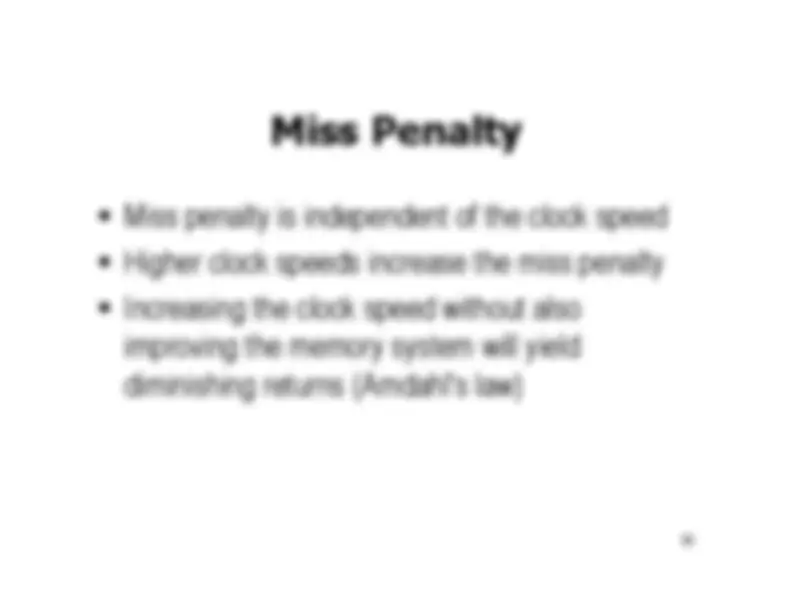
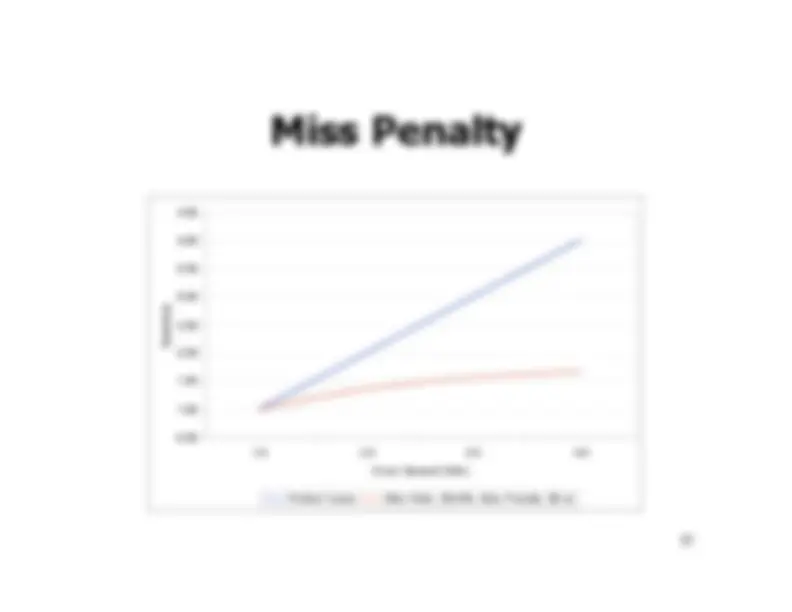
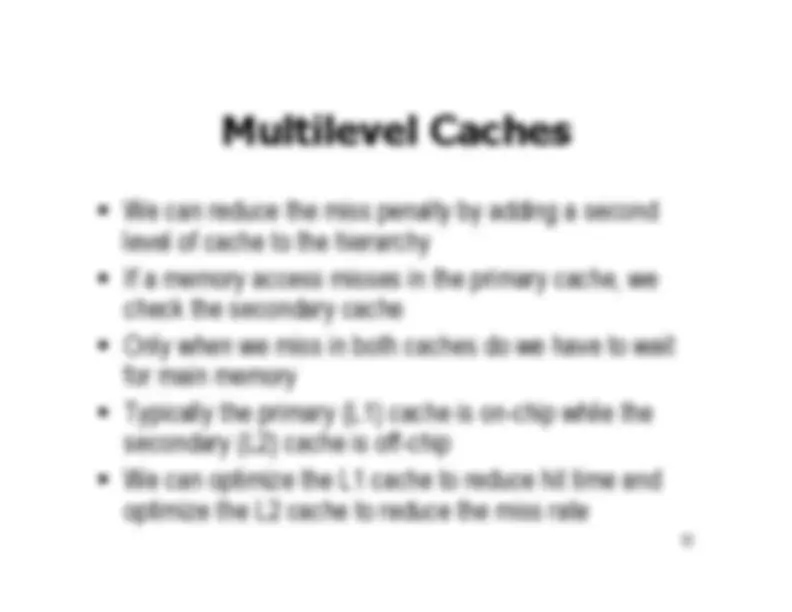
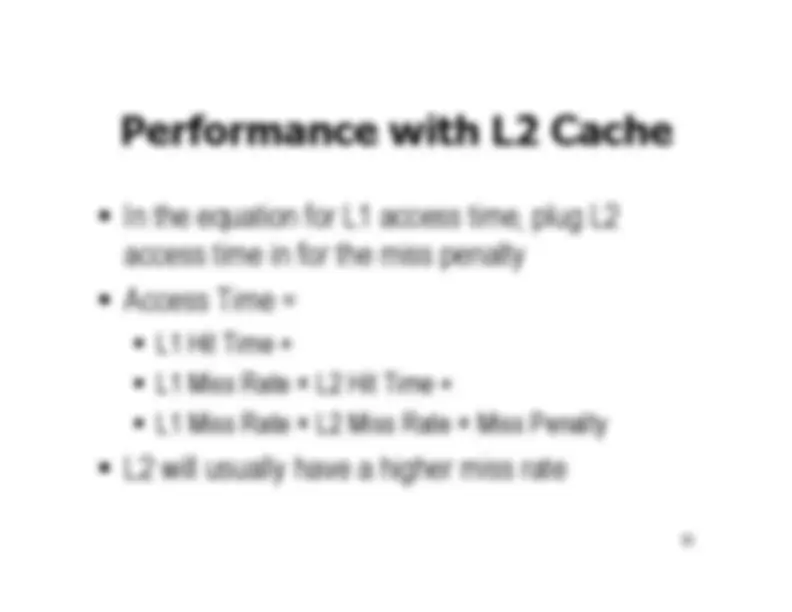
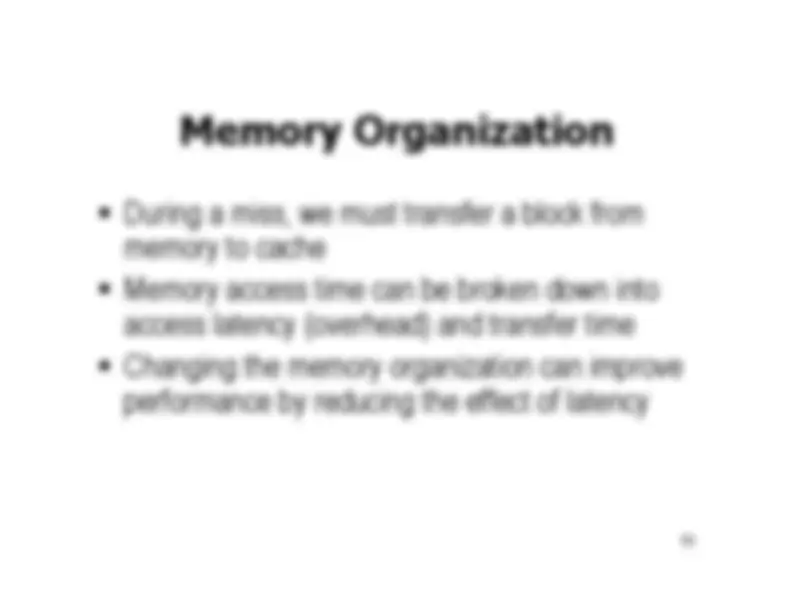
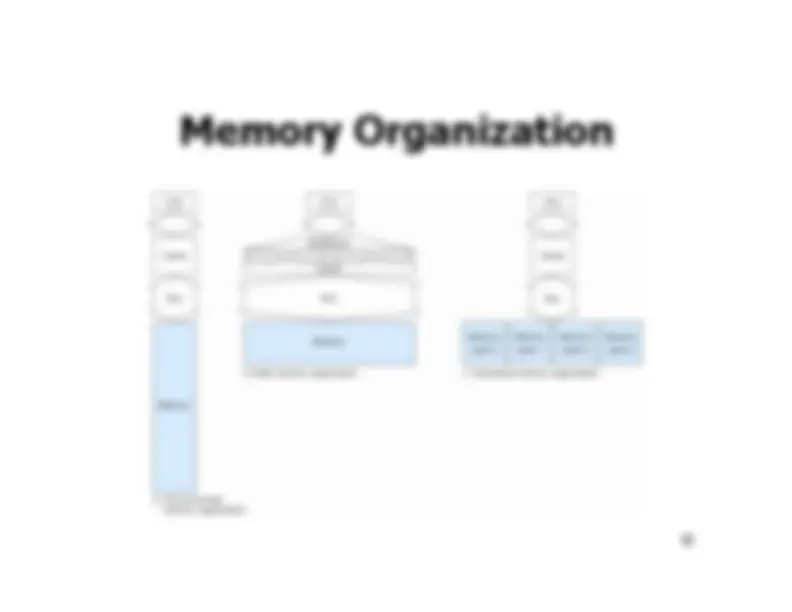
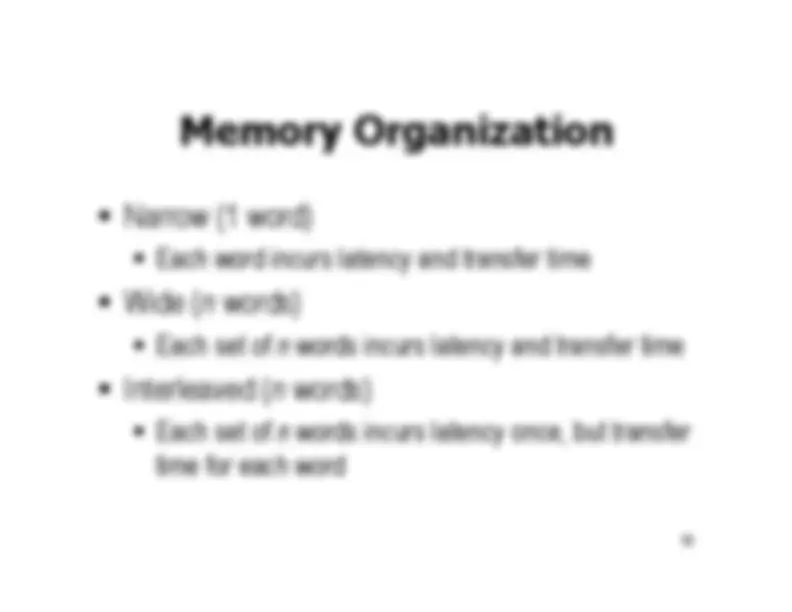


Study with the several resources on Docsity

Earn points by helping other students or get them with a premium plan


Prepare for your exams
Study with the several resources on Docsity

Earn points to download
Earn points by helping other students or get them with a premium plan
Community
Ask the community for help and clear up your study doubts
Discover the best universities in your country according to Docsity users
Free resources
Download our free guides on studying techniques, anxiety management strategies, and thesis advice from Docsity tutors
Material Type: Notes; Professor: Steinfadt; Class: COMPUTER ARCHITECTURE; Subject: Computer Science; University: Kent State University; Term: Spring 2008;
Typology: Study notes
1 / 56

This page cannot be seen from the preview
Don't miss anything!

















































Taken from Kevin Schaffer’s slides CS 35101 Computer Architecture Spring 2008
Index V Tag Data 11 N
00 Y 00 Mem[0] Index V Tag Data 11 N 10 Y 00 Mem[2]
00 Y 00 Mem[0] Index V Tag Data 11 Y 00 Mem[3] 10 Y 00 Mem[2]
00 Y 00 Mem[0] Index V Tag Data
11 Y 00 Mem[3] 10 Y 00 Mem[2]
00 Y 00 Mem[0] Index V Tag Data 11 Y 00 Mem[3] 10 Y 00 Mem[2]
00 Y 01 Mem[4] Index V Tag Data 11 Y 00 Mem[3] 10 Y 00 Mem[2]
00 Y 01 Mem[4] Index V Tag Data 11 Y 11 Mem[15] 10 Y 00 Mem[2]
00 Y 01 Mem[4] Index V Tag Data